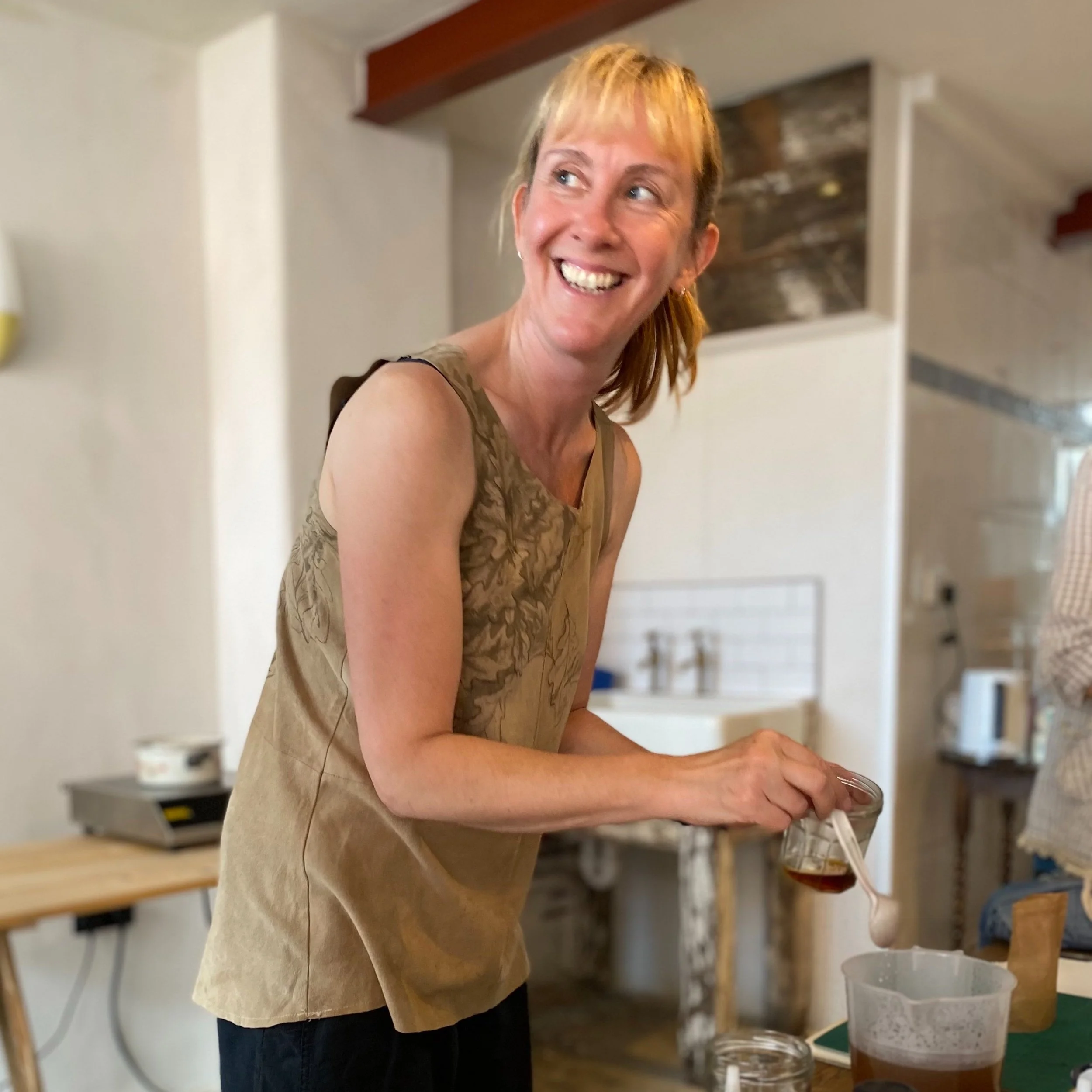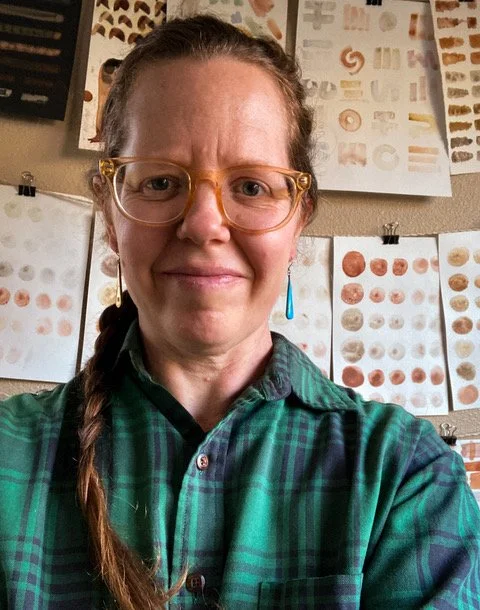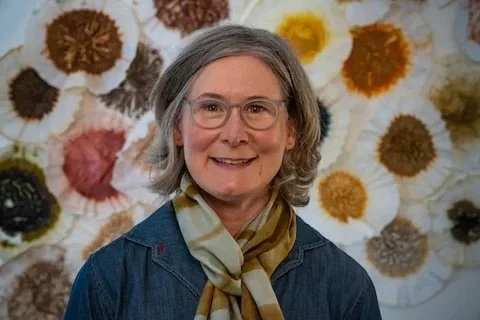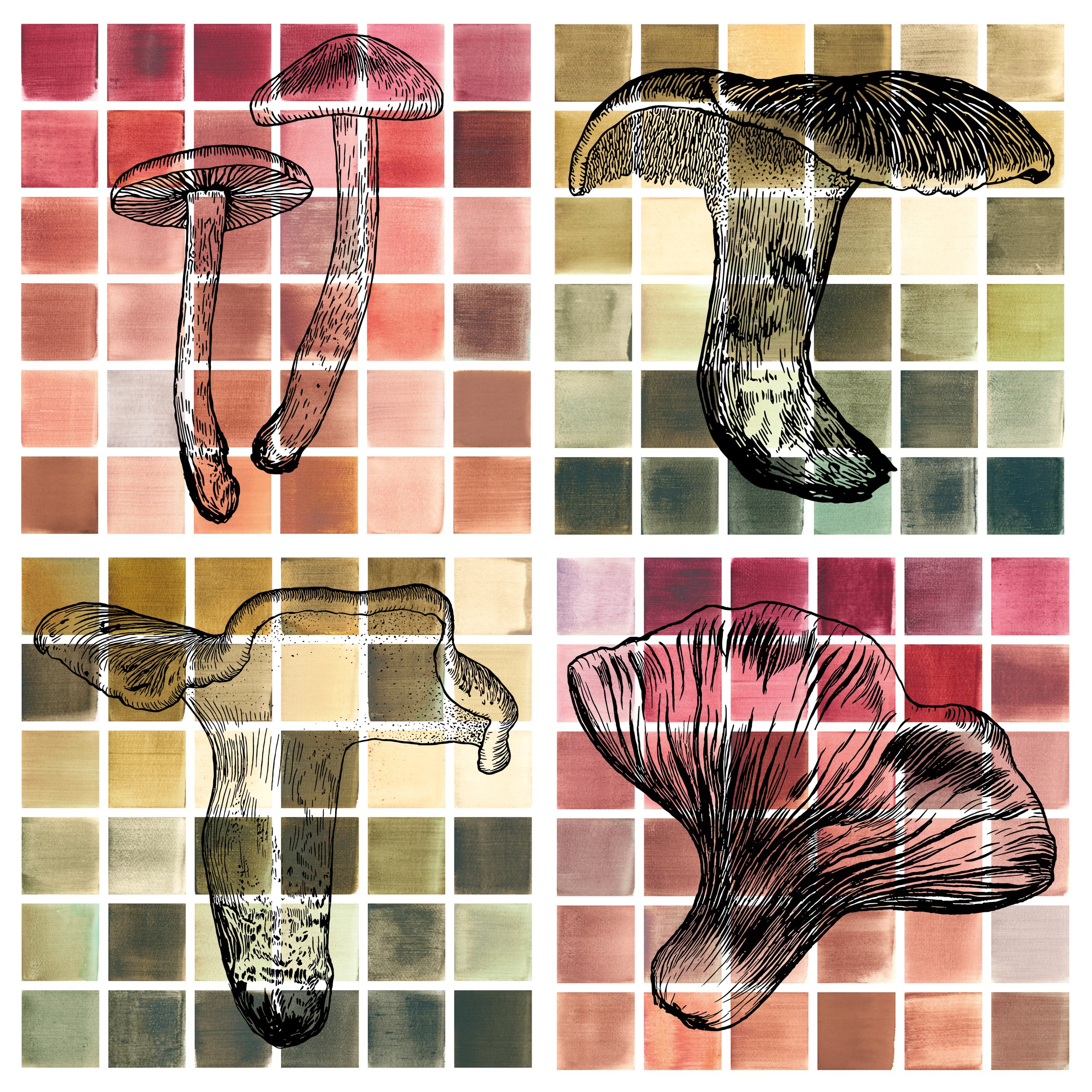
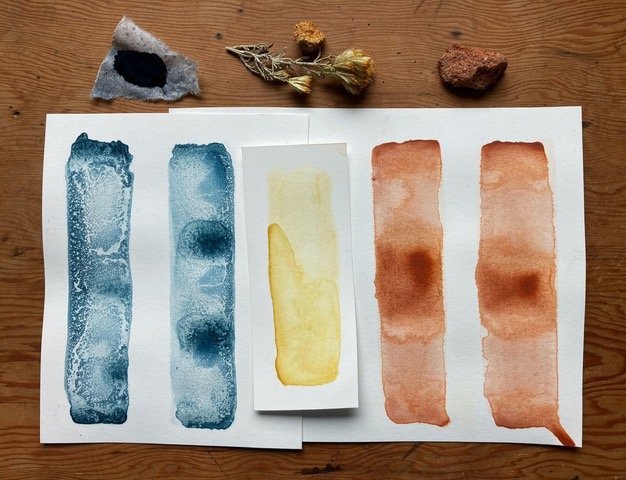
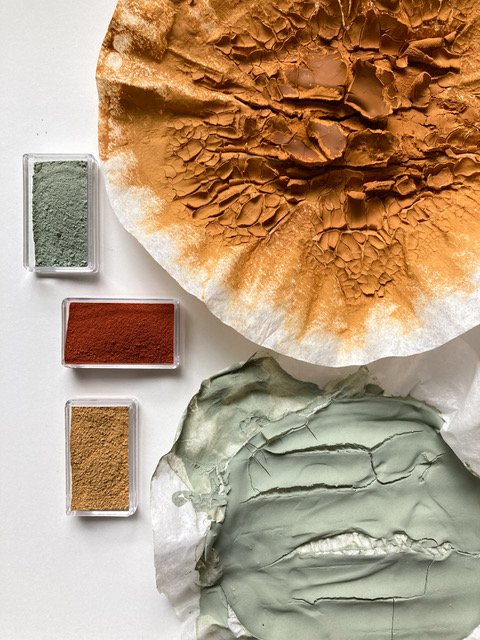
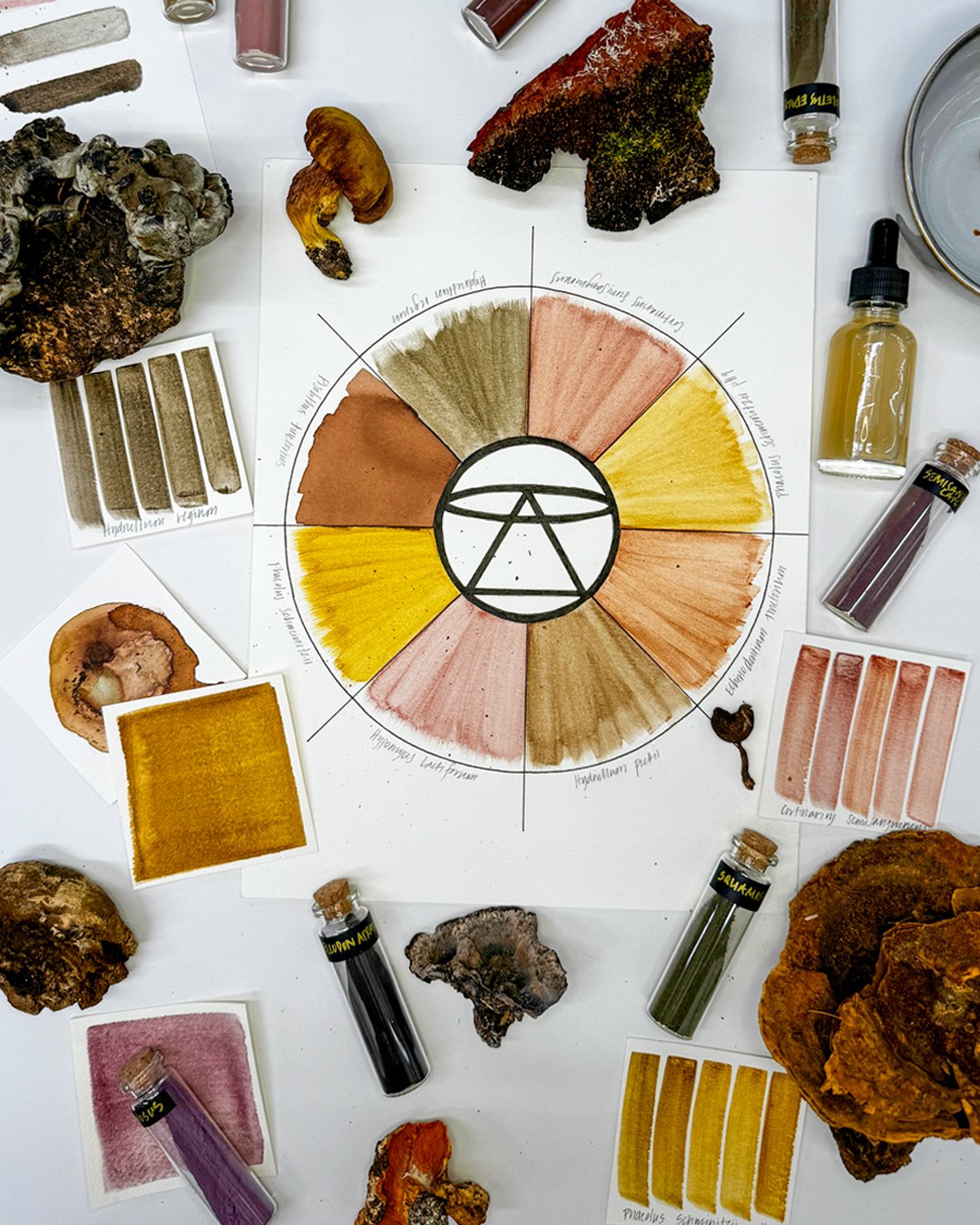
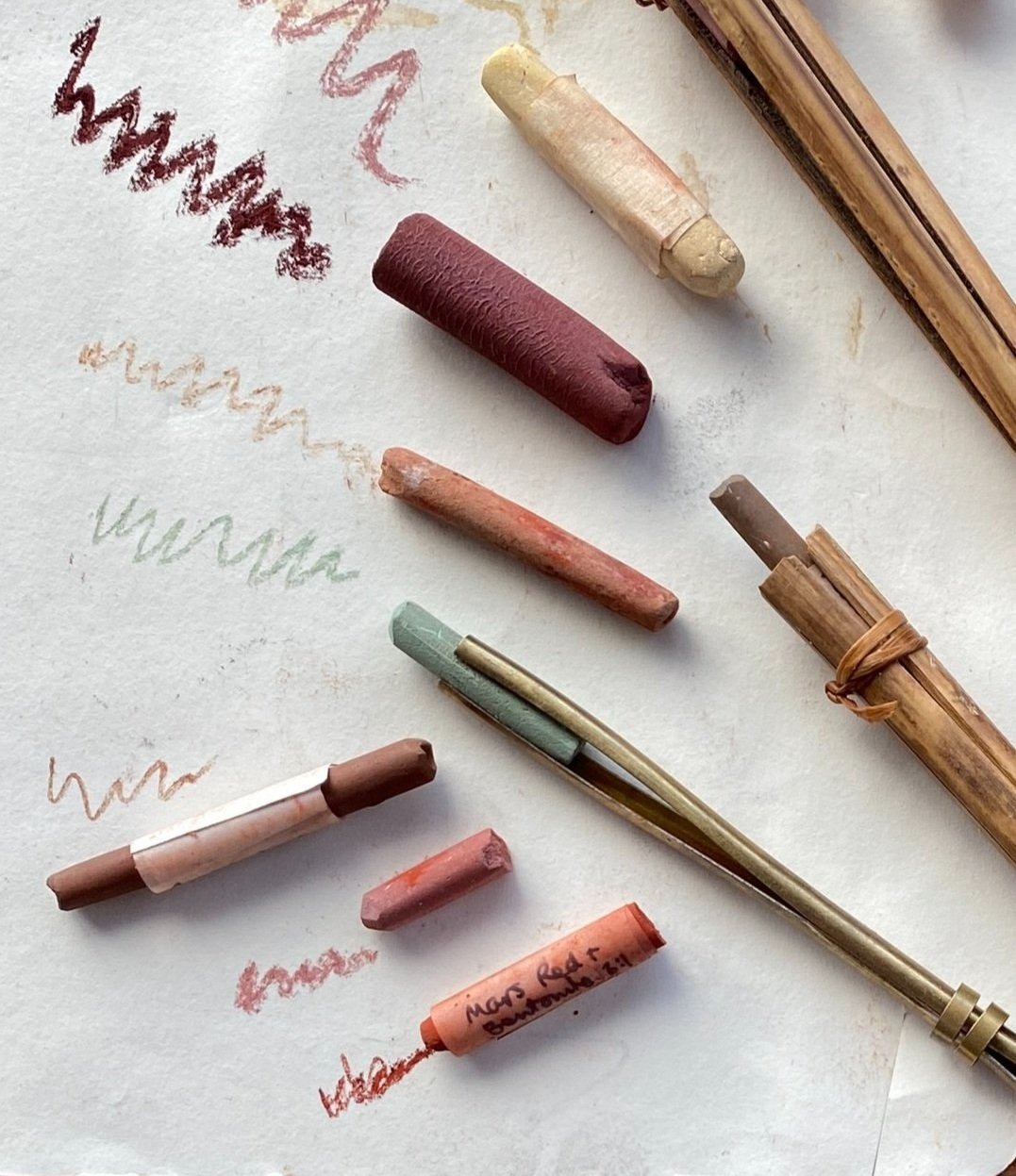
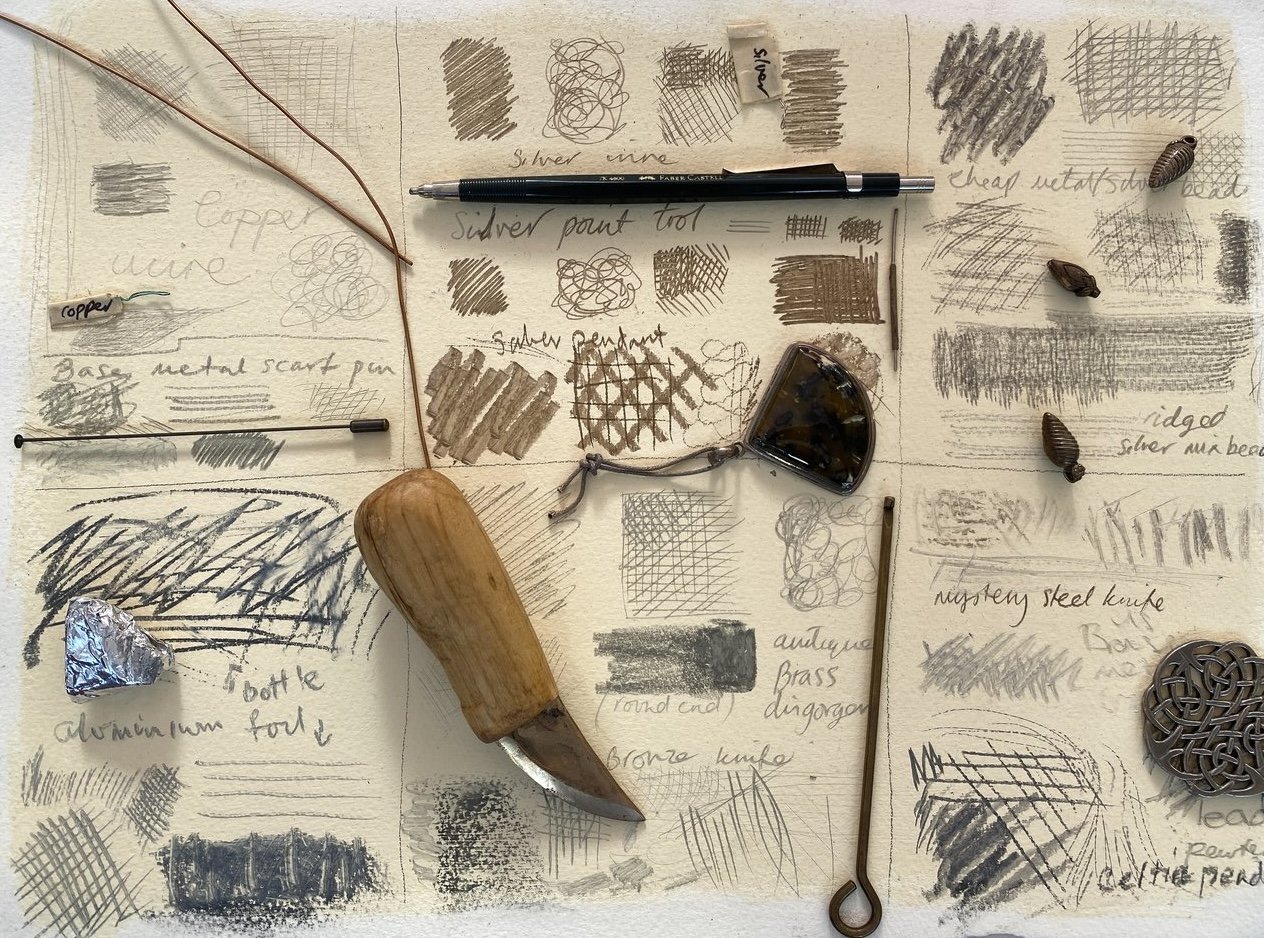
Making & Working
With Natural Art Materials
An Online Programme of Demonstrations and Talks Starting in Spring 2026
Part Two to the Natural Colour Making For Artists Year Long Programme.
Offering deeper dives into approaches to making and working with natural art materials for drawing and painting. Sharing practices for working with plant and earth based colour, building on skills & knowledge over the year to create an artist material tool kit from pastels, to inks, from metal-point, to gesso & more.
JOIN THE WHOLE PROGRAMME
Gain Access to all the teaching sessions as well as the opening and closing sessions, Study Groups and Mentoring
Making and working with natural art materials for drawing and painting. Sharing practices for working with plant and earth based colour, building on skills & knowledge over the year to create an artist colour palette of paints, inks, pastels, and pigments. This programme will be going into greater depth over a wide range of approaches to making and working with natural art materials from pastels, to inks, from metal-point, to gesso & more.
Gain access to The Natural Colour Making For Artists Programme (2024/25) (£390) as well as joining Making & Working With Natural Art Materials Programme (2026) (Original Price: £430)
THE PROGRAMME
-

In this live group session to launch the course, there will be introductions from the teachers and an overview of the teaching sessions.
Studio set-up: Accessible/beginner set up as well as a more professional setup. Studio hacks
Documenting/note taking/Journaling/sketchbooking.
Talking through the structure of the course
Breakout groups for people to share what they want to get from the course.
-

The essential principles and materials involved in creating paint from scratch, along with guidance on selecting appropriate surfaces and substrates. The session will delve into the fundamental components of paint; pigment, binder, solvent, and optional additives, exploring what each one is and how it functions within the mixture. The roles of these components will be clearly explained and expanded upon to build a strong conceptual foundation. Particular attention will be given to traditional, non-toxic, and biodegradable art practices, highlighting high-quality natural binders such as gum arabic, egg yolk, casein, and plant-based glues. These will be categorized to help participants develop a method of paint production rooted in low-impact, sustainable materials. Visual aids such as diagrams and side-by-side comparisons of different paint types will support participants in understanding these distinctions. This session serves as a crucial primer for the next in Lucy's series, "PIGMENTS – Fundamentals Deep Dive." To conclude, Lucy will demonstrate several of the key principles discussed, bringing the concepts to life through practical application.
-

Red, yellow, and blue are the traditional primary colours. When using synthetic pigments these are the base for any palette. How does this concept apply to natural colour, particularly locally foraged natural colour? As much fun as it is to experiment with new plants or forage for new sources of mineral pigments, deepening the relationships you have with just a few pigments or dyes can be very rewarding. These are colours you can come back to again and again to find consistency in your work. I’ll show you my palette of personal primaries and talk to you about how to create your own.
-

The characteristics of paper can have a big effect on your work, particularly when working with the quirks of handmade artist materials. What are the fundamental qualities of paper? We’ll discuss the fundamentals of paper- fibers, sizing, weight. I’ll show you samples of different types of paper and how they work with wet and dry media.
-

In this workshop we will create 'utilitarian inks', suitable for daily use with refill and fountain pens.
Annie will be using techniques and methods already established throughout our natural colour journey together and applying them to this context, focusing mainly on watercolour and carbon inks. These methods can also be applied to writing, illustration, drawing and calligraphy practices.
Caroline will be showing how Annie's inks can be used with quill pen, reed pen, bamboo drawing pens and for use in metal calligraphy pens. She will demonstrate how to cut and refine pens from both foraged and bought materials, change nib width and angle to produce different marks for drawing and to create contrasting letterforms for text. Novel materials for making pens will also be looked at, such as card, birch bark and felt (for markers). Pen cleaning, storage and care will also be covered.
-

Join designer, artist, educator and creator of the Mushroom Color Atlas, Julie Beeler, in exploring the realm of working with natural pigments from mushrooms to create a series of inks using different binders including fungi. She will explore different techniques for working with fungi that lend themselves well to the art of ink making. After this session you will be able to make mushroom inks with different binders and learn how to use them to achieve various techniques using four different modifiers.
-

Explore pigments beyond the basics, delving into their deeper scientific and artistic complexities. Building on foundational knowledge from Lucy’s first session, the session we will examine the physical and chemical properties of pigments, including particle morphology, size, and surface characteristics, and how these factors influence colour, opacity, texture, and permanence. Participants will learn to distinguish between natural and synthetic pigments, understand their behaviour in various binders and mediums, and gain insight into how pigment qualities affect application and final artwork. Through detailed explanations and visual demonstrations, this session aims to equip artists and makers with a richer, more nuanced understanding of pigments that will enhance their creative and technical practice. The session will conclude with a live demonstration where Lucy will bring these concepts to life by showcasing a selection of hand-made pigments and paint, while also sharing practical tests that participants can use to better understand their pigments on a deeper, more intimate level.
-

Make unique graded hard (clay-based) pastel sets tailored exactly to your needs. Also create deep shiny blacks, silvers, greys and coloured graphite pastels to create the ultimate drawing pastel set.
-

Lichens are remarkable organisms formed through a symbiotic partnership between fungi and algae, and have been used for centuries to produce striking dyes in cultures across Asia, Europe, and North America. In this session, Julie Beeler—creator of the Mushroom Color Atlas—will guide you through a thoughtful and ethical approach to working with lichens for color. You'll learn how to differentiate species, follow a forager’s code of conduct to ethically engage with lichens, and explore their unique chemistry as substantive dyes. We will delve into both traditional and contemporary extraction methods, including ammonia fermentation and boiling water techniques. Finally, we’ll explore and demystify how lichen dyes can be transformed into inks and paints—experimenting with each method’s potential and celebrating the unexpected alchemy that unfolds along the way.
-

Wet and dry mediums, botanical and mineral colours, water-based and oil-based mediums.
Layering different mediums together can create unexpected patterns and textures. Oak gall ink makes a beautiful wash under pale mineral colours and pastels. Wax crayons drawn over the top of a dry pigment act as a binder, or they can serve as a resist to subsequent applications of water based colour. Egg glair and egg tempera are useful for transitioning between water based and oil based mediums. We’ll look at a lot of swatches and talk about how various mediums can be used together.
Using botanical inks, using mineral pigments and paints, using pastels, using wax crayons, and egg binders.
-

Making a seaweed based gesso, suitable for use with natural pigments and for application on paper and canvas, Exploring various whiteners and tints to further exploration. We will also look at stretching canvas in preparation to take gesso.
-

Learn how to create traditional grounds for metal point drawing on paper, boards or wood using both (vegan) chalk / gum gouache method, and animal glue / bone white methods. Select, test and use many metals for drawing, both traditional precious ones such as silver, as well as experimenting with metals found around the home, to create beautiful, permanent drawings rich in character and patina.
-

In this closing session, we will be troubleshooting common mistakes and issues. We will also make space for sharing work, reflections & feedback.
Meet The Teachers
You don’t need to have done Part One to join this programme, but do have the option to sign up to join Part One if you missed it last year.
Elements:
13 monthly online sessions available to join live or watch the recordings.
Opening and closing sessions with all the teachers.
11 live online demonstrations.
Downloadable PDF handouts will be available for all sessions. With recipes & specific equipment & materials.
A reading list
An equipment & materials overview and guide
We will make a What’s App group that members can join to connect with each-other and share work.
For Whole Programme Members: (Limited spaces available)
Study Groups With Annie Hogg and Issy Denton
Monthly meet-ups with Just 12 Spaces Available in each group
Early bird payment plan: 6 Payments of £34.00 for 6 months. (Available until the end of September)
One Payment of: £180.00
How To Join: Join the whole Making & Working With Natural Art Materials Programme to access the sign-up page.
Mentoring With Caroline Ross, Annie Hogg, and Lucy Mayes
Sign up to 3 x One Hour Sessions To be completed within the duration of the year long course
Price: Three monthly payments of £90 or one payment of £270
How To Sign Up: Join the whole Making & Working With Natural Art Materials Course Programme to access the sign-up page.
Access: All members will have access to the live sessions as well as the recordings in the member area on Plants & Colour Website. The resources will be available until March 2028, one year after the course is completed.
Time Commitments: The live demonstrations will be two hours every month. You can either join live or watch the recordings in your own time. In order to practice the techniques in your own time, this will require 6-12 hours per month of studio practice. The course is really what you make it. The more you can find the time to practice the techniques each month, you will get more from the course.
JOIN THE WHOLE PROGRAMME
Gain Access to all the teaching sessions as well as the opening and closing sessions, Study Groups and Mentoring
Making and working with natural art materials for drawing and painting. Sharing practices for working with plant and earth based colour, building on skills & knowledge over the year to create an artist colour palette of paints, inks, pastels, and pigments. This programme will be going into greater depth over a wide range of approaches to making and working with natural art materials from pastels, to inks, from metal-point, to gesso & more.
Gain access to The Natural Colour Making For Artists Programme (2024/25) (£390) as well as joining Making & Working With Natural Art Materials Programme (2026) (Original Price: £430)
JOIN AN INDIVIDUAL SESSION



